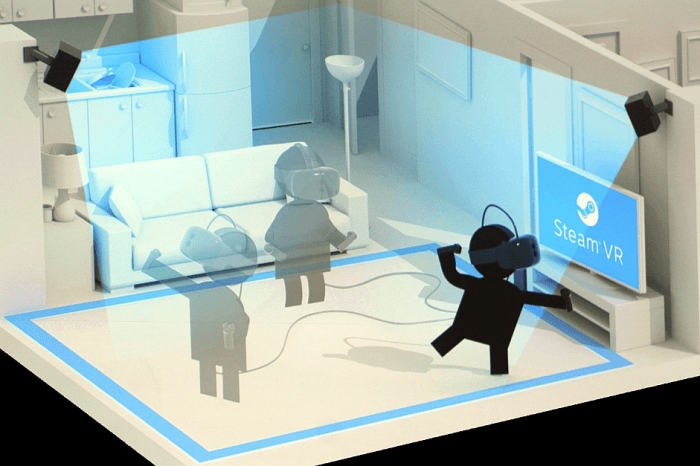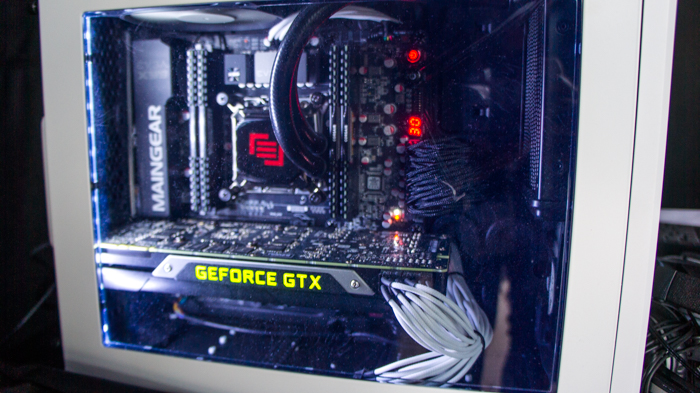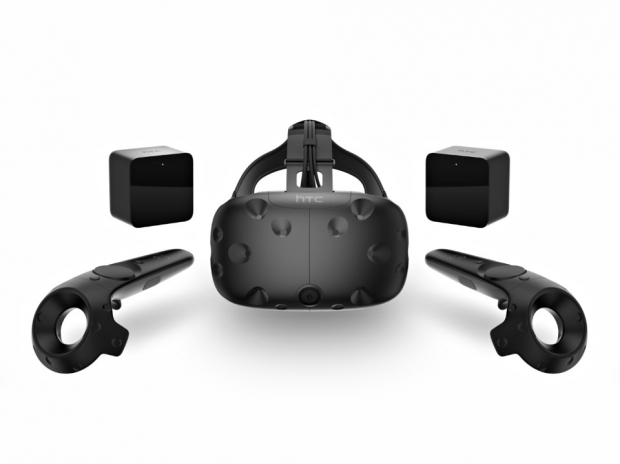The company appears set to make due on that promise, and on Sunday at Mobile World Congress 2016 in Barcelona, it announced that it will begin pre-orders for the device will begin early next week, with an official launch price of $799.99. The kit (pictured above) includes the HTC Vive Consumer Edition headset, two wireless controllers, two Vive Base Station room sensors, a Vive Link Box, and a pair of Vive earbuds. The consumer edition now features a built-in microphone that has an open API, and HTC expects developers to find many creative uses for it outside of just gaming. The bundle also integrates Valve Inc.’s SteamVR software platform to ensure that Vive equipment is always up-to-date with the latest features.
HTC Vive room sensors (via SteamDB.info)
As we mentioned previously, the first-generation hardware is expected to be quite pricy as the product is aimed toward enthusiast prosumers who can meet the PC requirements of at least 4GB of system memory and, preferably, a Geforce GTX 970 / Radeon R9 290 or higher GPU. These are HTC’s minimum requirements for the HTC Vive as released on February 21st. Other requirements include HDMI 1.4 or DisplayPort 1.2 and one USB 2.0 port.
In comparison, the Oculus VR requires the same minimum GPU specs (GeForce GTX 970 or Radeon R9 290), but needs at least 8GB of system memory. The Oculus headset only requires HDMI 1.3, but also needs three available USB 3.0 ports and one USB 2.0 port. For some users, these heavy port requirements may be a deal breaker depending on how many PCI-E lanes are being used and the HTC Vive may have an advantage here in terms of its single USB 2.0 port requirement.

The PC that HTC used during its Vive VR demonstration at CES 2016 last month featured an EVGA X99 Micro2, Corsair Vengeance DDR4 memory and a high-performance Geforce 900 Series GPU.
On Sunday, HTC also announced a new feature of the SteamVR system software that allows wearers to pair an iOS or Android device via Bluetooth and receive incoming calls and messages on the VR display at any given time. They are calling this "Vive Phone Services," and it will become a way to integrated voice communication and data inside a virtual environment while playing games or using other VR applications.
HTC will be pairing the Vive with two launch games in the package – Job Simulator: The 2050 Archives and The Fantastic Contraption. During our hands-on review of the Vive at CES 2016, we got to try the Job Simulator demo by Owlchemy Labs that had us placed in a virtual office room labeled the “Office of 2050.” Here, we used the Vive controllers to interact with objects on an office desk by picking them up, throwing them around the room, plugging in a desktop PC and powering it on, and even using a 3D printer to scan desktop objects and make copies of them.
HTC Vive - Job Simulator (2016) Trailer
We have not tried The Fantastic Contraption, but it involves walking around a grassy island floating in the sky, building a machine the size of a horse with your own hands, and watching it roll out into the world.
HTC Vive - Fantastic Contraption (2016) Trailer
HTC claims it is teaming up with developers to extend the possibilities of its VR platform to other industries including entertainment, education, retail, design, healthcare and the automotive industry.
Pre-orders for the Vive will begin Monday, February 29th at 10am EST (7am PST) on its Vive homepage for $799.99, while the actual launch is expected sometime in April. The release will initially be limited to 24 countries: United States, Canada, the United Kingdom, Germany, France, Austria, Belgium, Czech Republic, Denmark, Finland, Iceland, Italy, Netherlands, Norway, Poland, Spain, Switzerland, Ireland, Sweden, Taiwan, China, Japan, Australia, and New Zealand.
Nevertheless, the high price of the first-generation device is suggestive of the idea that this launch will be catered mostly just to early adopters who want to show their support for the VR platform and get it off the ground before more developers join the crowd and begin developing “truly groundbreaking” blockbuster titles. The first-generation Oculus VR, even at a price point $200 below HTC’s headset, is expected to cater to the same market. Nevertheless, it appears that the launch of these two devices are rather representative of the initial pricing differences between the PlayStation 3 / 4 and Xbox 360 / Xbox One, and depending on the manufacturing costs of each unit, a large portion of revenue may eventually be generated more with games rather than through the devices themselves.
As with all platform launches, it might be another 12 to 18 months before we see any games worth spending this amount of money on for new hardware that is prone to have a basic “vanilla” operating system for a while before the industry catches on. We are reminded of the Nintendo Wii when it launched in November 2006 with innovative Wii Remote and Nunchuk controllers and the Xbox Kinect when it launched in November 2010, but these are still an apples to oranges comparison with VR. It is more appropriate to say that reality head-mounted displays represent a new sensory input modality – mainly 360-degree “depth of field” (DoF) – rather than just a whole-body immersion upgrade with new motion controllers.




